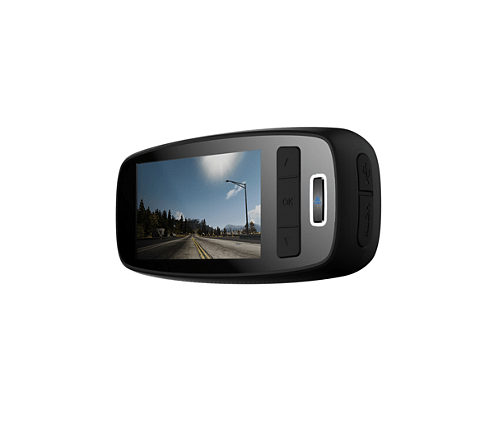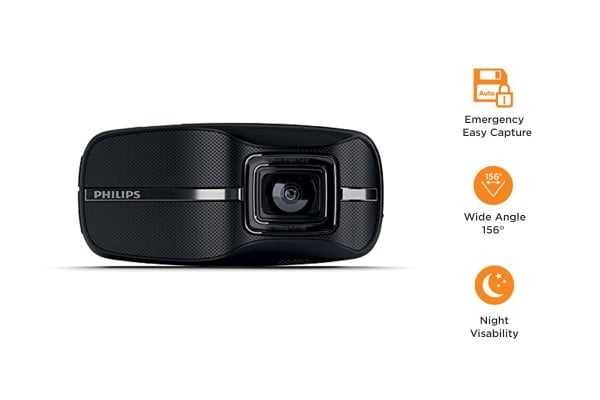In recent years, there has been a surge in the use of on-board cameras by road users. Cyclists and motorcyclists were the first to recognise the benefits of having recorded video footage but motorists were soon to follow and it is estimated that there are currently over 2 million “dash cams” in use in the UK with the number set to rise. As technology has advanced, a new generation of small, high quality video cameras has appeared specially tailored to meet the needs of the motorist. The main reason for using such a camera is to ensure that video evidence is available in the event of an accident and many drivers are also concerned about deliberately staged, so-called “Crash-for-Cash”, incidents and fraudulent insurance claims.

For those thinking about buying their first such camera, it is often to difficult to know which features to look for. There is certainly no shortage of choice in the dash cam market both in terms of features and prices but many of the lower priced models tend to come from unknown brands so when the electronics giant Philips entered the market many people took notice. Most people know Philips as the innovative Dutch company who gave us ground-breaking products such as the compact audio cassette, VCR, laservision optical disc, compact disc and dvd but they are less well known in the field of cameras. Philips are of course a truly multi-national company and their dash cams (or ADRs) are already the leading brand in China.
ADR810 Dash Cam – Features
The Philips ADR810 is a well specified unit which should meet the demands of most users. At the heart of the ADR810, 1080p full HD definition 30 fps recordings are produced. In order to include as much detail as possible, a super wide angle 156 degree lens is provided. The ADR810 measures 106.7 x 50 x 32.5mm and weighs just 83 grams. It is attached to the windscreen by means of a swivel mount with an adhesive pad meaning that, once attached, the mount remains in place even when the camera is removed. A spare adhesive pad is also included for future use. The camera is attractively finished in black making it fairly unobtrusive. A long power lead is provided (approximately 4m) with a cigarette socket plug at one end and mini USB at the other. Both plugs are set at a 90 degree angle which helps to provide a neat installation. In addition to the USB socket, the camera also features an HDMI output and, at the other end is an on/off slide switch and an aperture for a micro SD card. It is worth noting that no SD card is included and, although this device does have internal memory, it cannot be used without a suitable card being inserted. The SD card should be at least 8 GB and can be up to 32 GB.
Like most dash cams, the Philips ADR810 offers continuous recording by overwriting older data. Some recordings however are saved and not overwritten so a higher capacity SD card would be advantageous in cases where substantial numbers of recordings are to be saved. The 2.7” LCD screen has three buttons to the immediate right these consisting of an up arrow, OK and a down arrow. These are used in conjunction with on-screen instructions. To the right of these is a single button with an illuminated surround. This is the emergency easy-capture button and pressing it creates a protected recording which includes the previous 30 second period. A similar button with exactly the same function is to be found on the cigarette socket plug and can probably be more easily, and more discretely, reached. One of the most important functions of a dash cam is to record details of any accident and the ADR810 incorporates a G-sensor, of adjustable sensitivity, which provides automatic emergency recording in the event of a collision. This results in proof-stamped evidence and playback at the scene is also possible. Another thoughtful safety measure is that this device keeps track of journey times and provides visual and audible alerts to inform the driver that fatigue is likely.
The Philips ADR810 has been designed to be extremely user-friendly with simple intuitive controls. Most features have auto-default settings but can be customised as required. It is able to cope with the rigours of inhospitable environments and can withstand vibrations and extreme temperatures. There are no internal batteries, the unit being completely powered from the vehicle’s electrical supply but it employs capacitors to store enough energy to maintain the internal clock functions for up to 5 days. The audio capabilities are of only average quality but video is some of the best available and video capture in very low light is extremely good.
In summary, the Philips ADR810 is smart and unobtrusive. It provides video recording of an exceptional standard along with collision detection for automatic emergency recording. It is extremely simple to operate. It has no GPS/sat-nav capabilities but simply concentrates on providing video evidence. The lower priced Philips ADR610 is also worth considering but it has a smaller screen and no emergency easy-capture button. The ADR810 also offers superior low-light performance.




